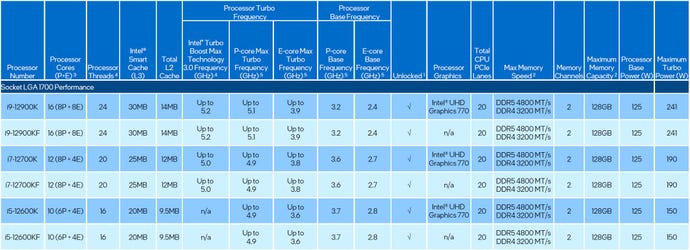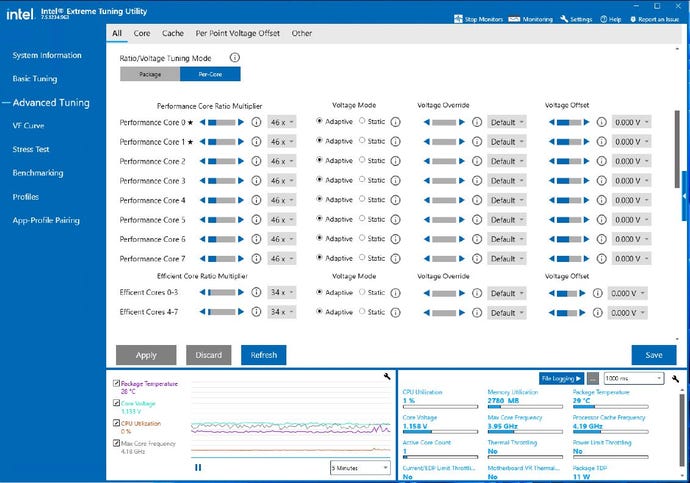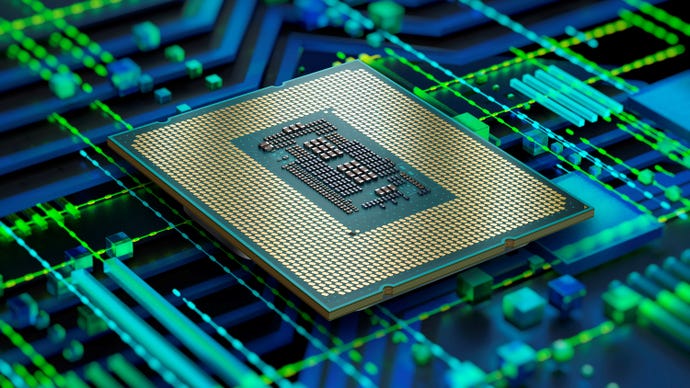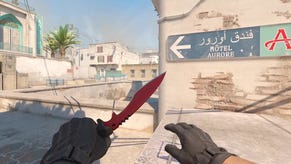Intel 12th Gen Alder Lake CPUs announced: everything you need to know
Specs, prices, features and all that good stuff
After a months-long spin around the rumour mill, the first batch of Intel 12th Gen Alder Lake CPUs is official. Despite the 11th Gen Rocket Lake chips only launching earlier this year, Alder Lake represents the biggest generational jump for Intel in over half a decade, thanks to its completely redesigned “hybrid” architecture and DDR5 memory support.
About time, too – while AMD has been stuffing the ranks of the best gaming CPUs with its Ryzen chips, previous Intel generations have been mere incremental updates. Hopefully the 12th Gen Alder Lake lineup’s ambition can drive the kind of meaningful performance gains that previous generations often lacked, but for now here’s everything we know about the new CPUs so far.
Intel 11th Gen Rocket Lake CPU specs
Intel has kicked off the 12th Gen era with six new processors. These include the top-tier Core i9-12900K, the high-end Core i7-12700K and the mid-range Core i5-12600K, as well as “KF” versions of each, which are technically identical with the exception of lacking integrated graphics. There will almost definitely be more Alder Lake desktop CPUs to come, though it’s likely these six will be the ones to focus on from a gaming standpoint, especially as they all come unlocked for overclocking.
The big change here is the hybrid architecture, which moves away from the conventional sets of identical CPU cores and instead splits them up into high-speed, high-power Performance cores (or P-cores) and smaller, less PSU-hungry Efficiency cores (E-cores). Similarly to most smartphone processors, the idea here is to allow the P-cores to bulldoze through lower-threaded apps like games, while the E-cores handle background processes or split the load more effectively in programmes that are more heavily multithreaded. The P-cores, at least on the six chips announced thus far, can also use Intel’s Hyper-Threading to spread the load around further. Here’s how they stack up on specs:

There are some familiar traits from previous Intel generations here, like how the Core i7 options has the same core count (of P-cores, anyway) as the Core i9 flagship models, just with lower clock speeds. The most obvious applications to this new hybrid design also appear to be multitasking and productivity rather than gaming, an approach that AMD have historically fared better at.
However, the hybrid design could very feasibly help out with games too. Besides the less power-intensive E-cores taking on background tasks like voice chat, recording, or streaming apps, all while leaving more power and thermal headroom for the P-cores to handle the game itself, some games are more multithreaded and will be able to offload certain calculations to the E-cores when they’re available. To optimise how tasks are allocated to different cores and threads, Intel have also created the Intel Thread Director, which quickly delivers feedback to the existing OS scheduler so the latter can more intelligently adjust task allocation to maximise performance and minimise thermal strain.

The E-cores are no weaklings, either. According to Intel, the Core i9-12900K’s E-cores are roughly as powerful as the standard cores in their 10th Gen Comet Lake processors, while using less energy. And these are the backups. You can see from that table above that the 12th Gen chips are still probably to end up sucking more juice than AMD’s Ryzen 5000 series, but as long as temperatures behave themselves this wouldn’t be the worst price to pay for superior performance.
I don’t recommend solely taking Intel’s word on how Intel chips perform, but since the review embargo is still a few days away, I’ve included their “official” gaming frame rate test results below for posterity. As you’d expect (and hope), the Core i9-12900K consistently lands above the last-gen Core i9-11900K, and is listed as either on par with or faster than the even more expensive AMD Ryzen 5950X. That’s encouraging, though keep in mind these were recorded with an RTX 3090 at 1080p; one suspects the gap will be smaller at higher resolutions.

The second biggest change is DDR5 memory support. DDR4 is still supported across the range, so you won’t necessarily need to change your current RAM when upgrading, though that will depend on your motherboard: Alder Lake chips will only fit in the brand-new LGA 1700 socket, so you’ll need a new board either way, and DDR5 and DDR4 use different DIMM slots themselves.
DDR5 promises higher speeds and wider bandwidths, so might well be a worthwhile upgrade if you’re keen to get the most out of a higher-end Core i9 or Core i7 model. With the 12th Gen release, Intel are also launching XMP 3.0 for DDR5 memory specifically: this upgraded overclocking tech aims to give finer control of memory OC profiles to enterprising DIYers. There’s more on XMP 3.0 and Alder Lake’s other overclocking features further down.
Futureproofers should also take note of the Intel 12th Gen’s PCIe 5.0 support, with 16 5.0 lanes on the chip itself. Right now there aren’t any storage drives or other components that can fully exploit PCIe 5.0’s vastly increased bandwidth – and let’s be honest, PCIe 4.0 SSDs are still something of a luxury – though these could arrive early next year. It’s an addition to keep an eye on, at least.
Intel 11th Gen Rocket Lake CPU prices and release date
These new CPUs are a little more expensive than their 11th Gen equivalents, especially the Core i9-12900K and its full $50 hike on the Core i9-11900K. The lower-spec chips are more reasonable, with the Core i7-12900K adding $10 to the Core i7-11700K’s starting price, though if you’re already costing an upgrade you’ll also need to stump for a new motherboard and potential new RAM as well.
- Intel Core i9-12900K: £580 / $589
- Intel Core i9-12900KF: £560 / $564
- Intel Core i7-12700K: £420 / $409
- Intel Core i7-12700KF: £390 / $384
- Intel Core i5-12600K: £290 / $289
- Intel Core i5-12600KF: £270 / $264
Pre-orders are live now, and while Intel's reps couldn't provide us with release dates prior to publication, all six are listed on Scan (UK) as coming on November 4th.
Intel 11th Gen Rocket Lake CPU overclocking
Alder Lake was “designed from the ground up” for overclocking, so besides the clock speeds being left with some extra headroom, the physical build of these CPUs has also been tweaked for better thermal conductivity. The processor die (the slice of silicone where the cores live) is thinner and the IHS, or integrated heat spreader, is thicker than on both the 10th and 11th Gen designs. That should mean less heat around the cores as it’s dispersed across the IHS on top, where it can transfer that heat to your CPU cooler. You can read our liquid cooling vs air cooling guide for more on how this heat transfer works.
Changes are also a-comin’ to Extreme Tuning Utility (XTU), Intel’s desktop-based overclocking app. Currently on version 7.5, XTU will gain the ability to tweak P-core and E-core ratios separately, a potential help for novice overclockers who might not yet be comfortable prodding the BIOS. The new chips will also work with Intel Speed Optimizer, XTU’s one-click overclocking tool, though only the Core i9-12900K will be compatible in 7.5; the other chips wills get support added in the future 7.6 update.

Back on the matter of XMP 3.0, this new tech will grant an oft-requested feature to keen memory overclockers: a greater range of profiles. Specifically, the profile count will rise from 2 on the DDR4-focused XMP 2.0 to five on XMP 3.0, with three of those being vendor-designed profiles and 2 being rewriteable user profiles.
Alder Lake will also introduce Intel Dynamic Memory Boost Technology. This is basically Intel CPUs' Turbo Boost feature, but for RAM: it can automatically switch the memory between default frequencies and higher XMP frequencies when it can do so without throttling, much like how Turbo Boost can dynamically raise CPU clock speeds. Dynamic Memory Boost apparently isn’t quite ready, but will be available through BIOS updates “very soon.”
Intel 11th Gen Rocket Lake CPU chipsets and motherboards
As is Intel tradition, a new CPU generation is accompanied by a new set of chipsets. This time it’s the 600 series, led by the top-flight Z690.
Whereas the 11th Gen’s Z590 chipset had 24 PCIe 3.0 lanes, merely relaying the CPU’s PCIe 4.0 lanes when necessary, the Z690 chipset has both 16 3.0 lanes and 12 4.0 lanes of its very own. This means that, with extra 4.0 lanes from the CPU, you can add more PCIe 4.0-compatible drives to your rig without running out of bandwidth. How many people will want to spend enough to own four separate PCIe 4.0 SSDs? Maybe not many, but hey, it’s an improvement. Integrated Wi-Fi support also gets a minor boost, with the Z690 chipset now supporting Wi-Fi 6E.

Z690 isn’t backwards-compatible with older Intel CPUs, so any Alder Lake purchase will also require a fresh motherboard - though this would be needed anyway, as the 10th and 11th Gen LGA 1200 socket has also been replaced by LGA 1700. This taller socket only fits the slightly bigger 12th Gen chips.
As a fun bonus (read: source of additional effort and/or expense), the larger socket means CPU coolers designed to fit the LGA 1200 and LGA 115X sockets won’t be compatible with LGA 1700 as-is. Luckily, this might not force you into buying a whole new cooler, as Arctic, Noctua and DeepCool are all offering free upgrade kits that will make certain existing coolers compatible with the new chip. Corsair are also selling upgrade kits for their coolers at a small fee.
If you’re planning to build a PC entirely from scratch, a lot of currently-available coolers will also start including LGA 1700 mounting hardware as standard. I’ve received both a Corsair iCue Elite LCD and an Asus Ryujin II 360 for testing with the 12th Gen chips, and both of them have been updated to include the requisite mounts.
Again, you’ll have a choice between Alder Lake-compatible motherboards with either DDR4 or DDR5 RAM slots, as the CPU and chipset will support both. It will just be the motherboard hardware that determines which type of memory you can use.










